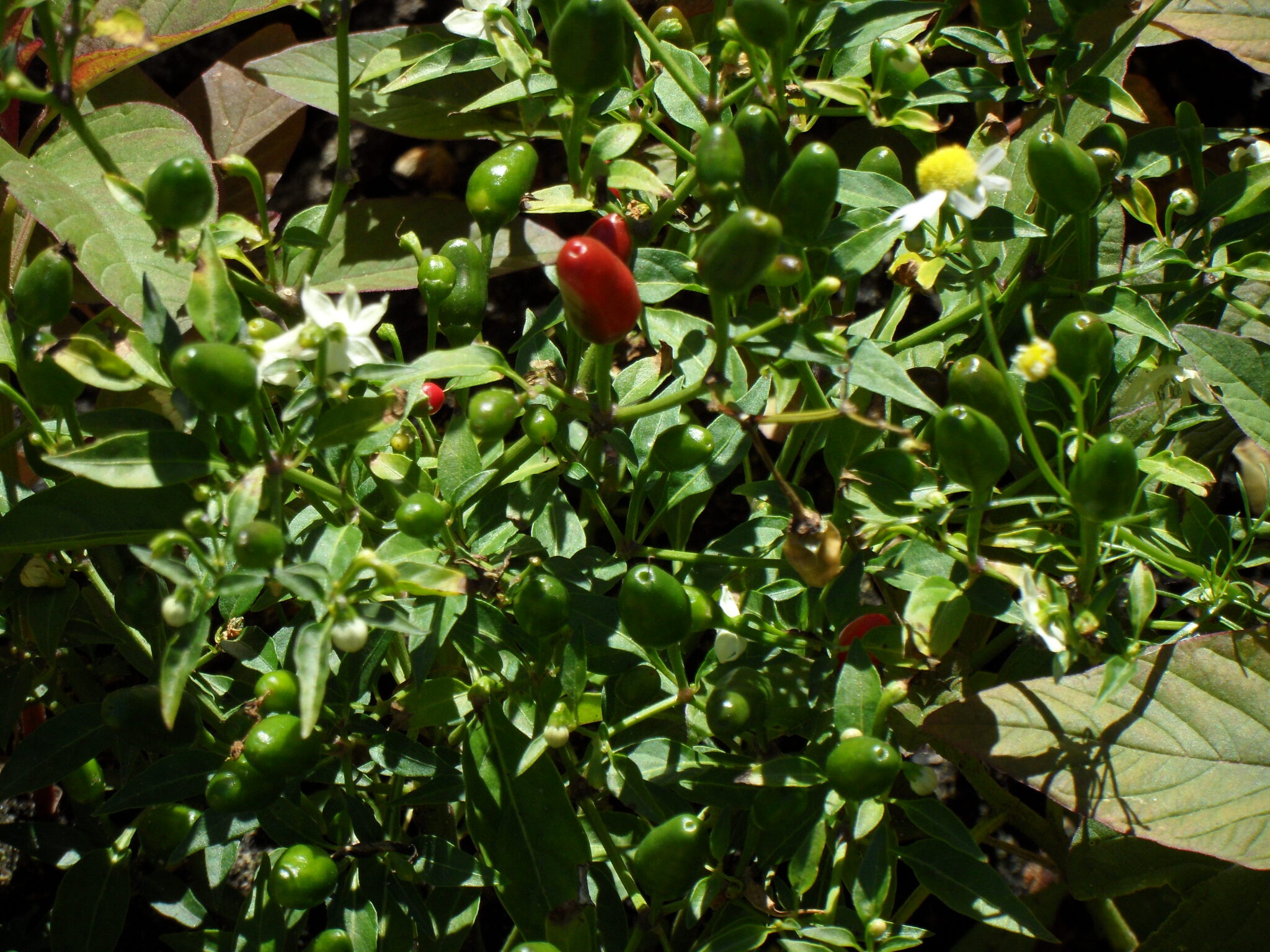
Greek kapto — to bite, referring to the hot taste of some varieties.
Annual, biennial and perennial herbs and soft-wooded shrubs. Leaves alternate or paired, ovate to elliptic, simple, entire. Flowers regular, solitary or several together in the leaf axils. Calyx tubular, with 5 tooth-like lobes or lobes absent. Corolla mostly deeply 5-lobed, white or occasionally greenish or pale violet, lobes wheel-like. Stamens mostly 5, equal, attached at the base of the corolla, bluish and projecting from the flower. Ovary 2-3-chambered. Fruit a dry to fleshy yellow, green, orange or red (occasionally purple or black in cultivars) pod-like berry containing flattened seeds.
Often grown for the attractive low, bushy habit and colourful edible pod-like berries; generally treated as annuals.
Seed.
Apart from their culinary uses, some varieties are used in the treatment of rheumatic disorders.
Flowers wheel-shaped; fruits the distinctive culinary peppers and capsicums.
10 species from tropical America.
Heiser & Pickersgill (1969), D'Arcy & Eshbaugh (1974), Symon (1981a), J. Andrews (1984), England (1999a, 1999b).
Source: (2002). Solanaceae. In: . Horticultural Flora of South-eastern Australia. Volume 4. Flowering plants. Dicotyledons. Part 3. The identification of garden and cultivated plants. University of New South Wales Press.
